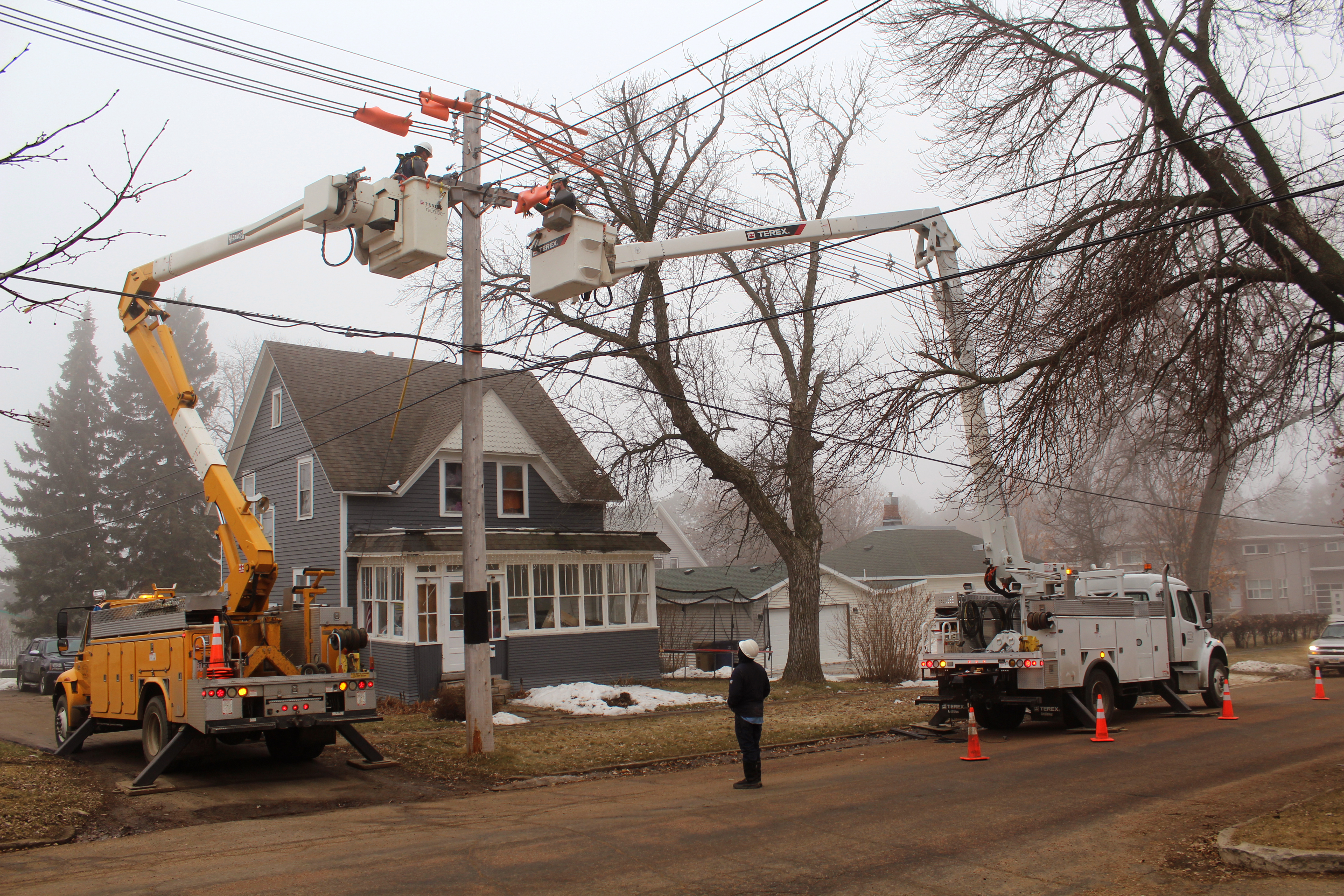Worksite Environmental Factors to Look for When Setting Up a Bucket Truck

An entire utility crew is responsible for contributing to safe and efficient operations at a worksite. One important aspect is being able to identify the environmental factors that can affect proper set up of a bucket truck. If it’s determined during the site survey and set-up that the jobsite is not safe, don’t operate in the area until it’s safe for your crews, your equipment, and the community. It is the employer’s responsibility to provide training and instruction on the task assigned to personnel involved with bucket truck or digger derrick use. Terex can provide common information, warning, and requirements on operation of Terex equipment as stated in the manuals. Terex does not provide the training to accomplish tasks assigned by the employer or determine the qualification of personnel assigned to perform those tasks.
Before Arriving:
First and foremost, the crew’s employer is responsible to ensure that each individual operator is properly trained and qualified to operate the bucket truck and that the instructions and precautions in the operations manual are being followed. With that said, make sure to do the following:
Send right-of-way agents and surveyors to determine if special permits will be needed from the Department of Natural Resources or other wildlife organizations.
Determine if an access road will need to be created or if ground protection mats will be needed to access the travel routes.
Install barricades or fencing to help to protect the site prior to the crew’s arrival.
If installing new poles call 811, Call before you Dig, to locate all underground utilities.
The ground crew must be trained to operate the aerial device in case the operator is incapacitated.
Upon Arriving:
Conduct a site survey to identify potential hazards
Potential hazards include buildings, ditches, drop-offs, holes, debris, sewers, overhead obstructions, electrical conductors, and underground utilities, and exposure to traffic.
Position your truck
When determining the position of the bucket truck be aware and operate accordingly to avoid contact and damage of the boom or platform with; trees, buildings, power lines, and communication lines,. Always establish and maintain proper minimum approach distance from energized power lines. The bucket truck cannot protect you from phase-to-phase or phase-to-ground contact at the boom tip, which means you need to allow for sag, sway or rocking as you are positioning and operating your bucket truck.
Be mindful of traffic, bystanders, and debris
When operating in or near traffic lanes the equipment must be marked and possibly the utility crew should use signalpersons to caution drivers. Know if the elbow overhangs outside the body, it will intrude into traffic lanes. Do not operate with the boom or platform over open traffic lanes. Always clear the area of bystanders and jobsite debris, including downed power lines and fallen tree limbs. Tree limbs can become energized when touching or near a live power line.
Understand the weather and other conditions
Ambient conditions including temperature, can present additional hazards. Operating in extreme weather conditions requires that you take extra precautions to protect your crew and truck.
Assess the ground conditions
The ground must be firm enough to support the ground bearing pressure produced by the bucket truck, including the maximum platform and jib loads, during operation. Use pads under the outriggers to distribute the weight over a greater surface area. If your bucket truck does not have outriggers, or is only equipped with one set, make sure all the tires and axle suspension springs are equally loaded. If the ground is slippery, snow covered, or icy consider how to prevent the vehicle from sliding.
Consider the terrain
If the vehicle must be parked on a slope, verify the parking brake will hold and chock the wheels. Per ANSI A92.2, bucket trucks are stability tested on firm, flat surfaces up to a 5° slope. Never work with the vehicle set up at an angle greater than what is allowed by the manufacturer. Use your bucket truck’s chassis level indicator to make sure the truck is always set within the manufacturer’s operational limits. Follow the instructions for your vehicle and recognize that some trucks must be leveled before raising the booms. If equipped with only one set of outriggers or no outriggers all tires and suspension must equally carry the load. No wheels can be in a depression.
What if there’s a slope?
If the task involves utilizing the bucket trucks’s jib and the unit is set up on a slope greater than allowed, you may cause the unit to tip or roll over. This is more true if lifting from the side. If necessary, level the truck using cribbing under the outriggers and wheels if necessary. It is possible to stack multiple outrigger pads to gain height as needed or use an engineered stackable cribbing product. Always position the outrigger foot in the center of the outrigger pad.
Related Posts

Safety Minute: Setting Up Bucket Trucks and Digger Derricks in Slick Conditions
Wintertime brings bitter cold and snowy weather. Here are a few tips on what to do to enhance your safe work practices when setting up in slick conditions.
Continue Reading

Terex Brings You Utility Pros – by Utility Industry Experts
Terex Utilities introduces Utility Pros – a way of connecting you with utility industry experts on the use and maintenance of bucket trucks and digger derricks.
Continue Reading

Three Important Tips on Conducting Your Own Annual Inspections on Bucket Trucks and Digger Derricks
While conducting your own annual inspections may seem the most affordable option, be sure to consider whether your technicians have the expertise required for the specific equipment. The same is true if you choose to outsource the inspection. If you are hiring someone else to do the inspection for you.....
Continue Reading

.png?sfvrsn=cfc0900d_0)